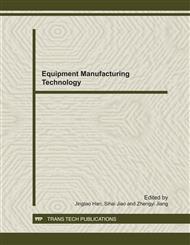p.75
p.79
p.83
p.87
p.91
p.96
p.102
p.107
p.113
An Environmental Factors-Based Automatic Control System for Folding Arm Awning
Abstract:
This paper developed an automatic control system for folding arm awning based on environmental factors, which can overcome the disadvantages of the traditional awning of unitary control mode and low level of intelligence. The system consists of sensor unit, controller, drive motor and transmission mechanism. The sensor unit is used for testing light intensity, wind speed and rain, then an AT89S52 SCM single-chip microcomputer which is the core of the controller is applied to receive testing signal and send instructions to AC motor to realize the extending and withdrawing state of the awning according to the corresponding control logic. Meanwhile, this system is able to switch from automatic control to manual control so as to deal with power outage and other special situation and maintain operation of awning. The results of the prototype test show that this system is running steadily and can adjust the working condition of the awning in time according to the environment change. Compared with the current electric awning, the intelligent folding arm awning controlled according to environmental factors can achieve more energy conservation and environmental protection.
Info:
Periodical:
Pages:
91-95
Citation:
Online since:
December 2011
Authors:
Keywords:
Price:
Сopyright:
© 2012 Trans Tech Publications Ltd. All Rights Reserved
Share:
Citation:


